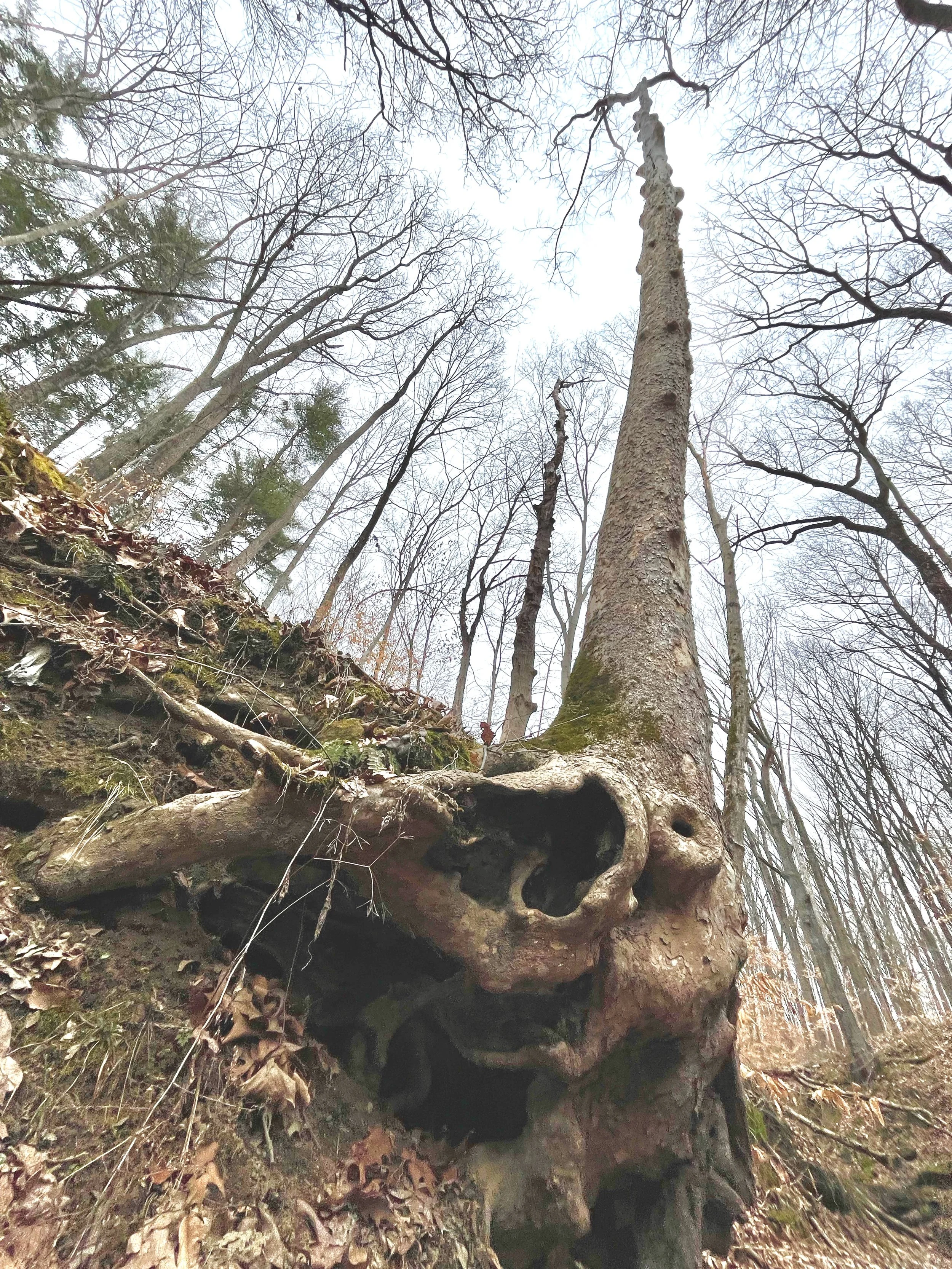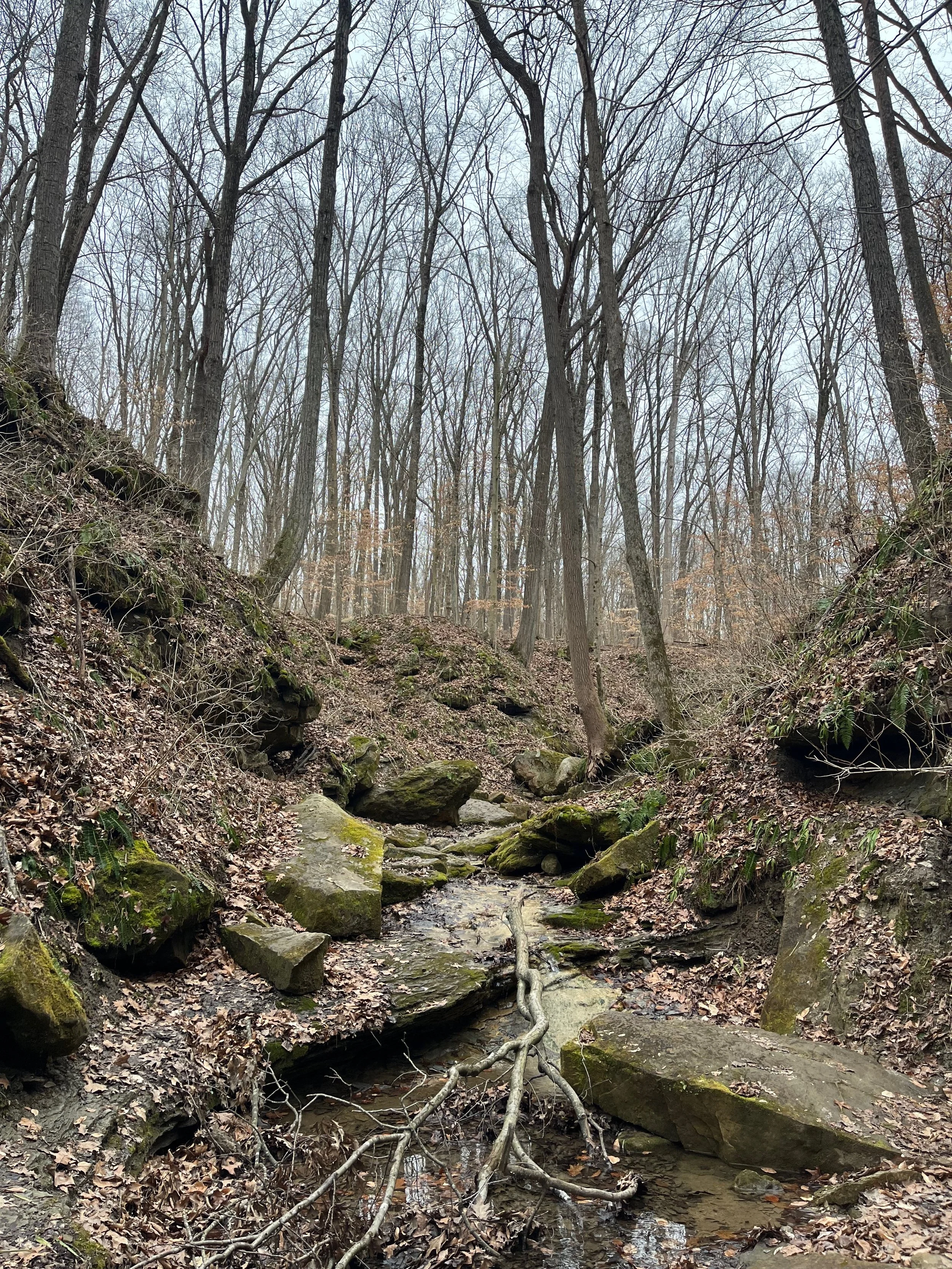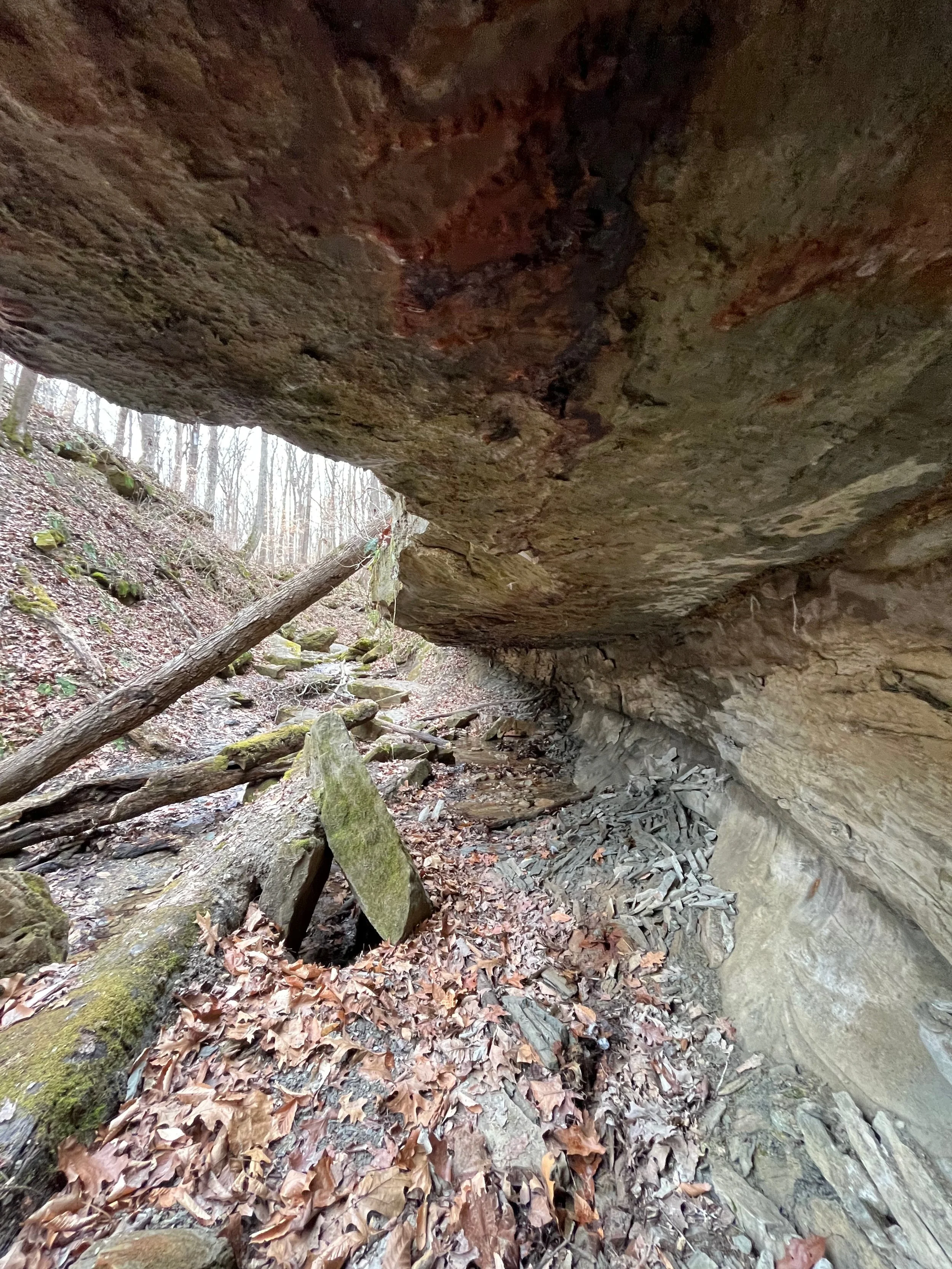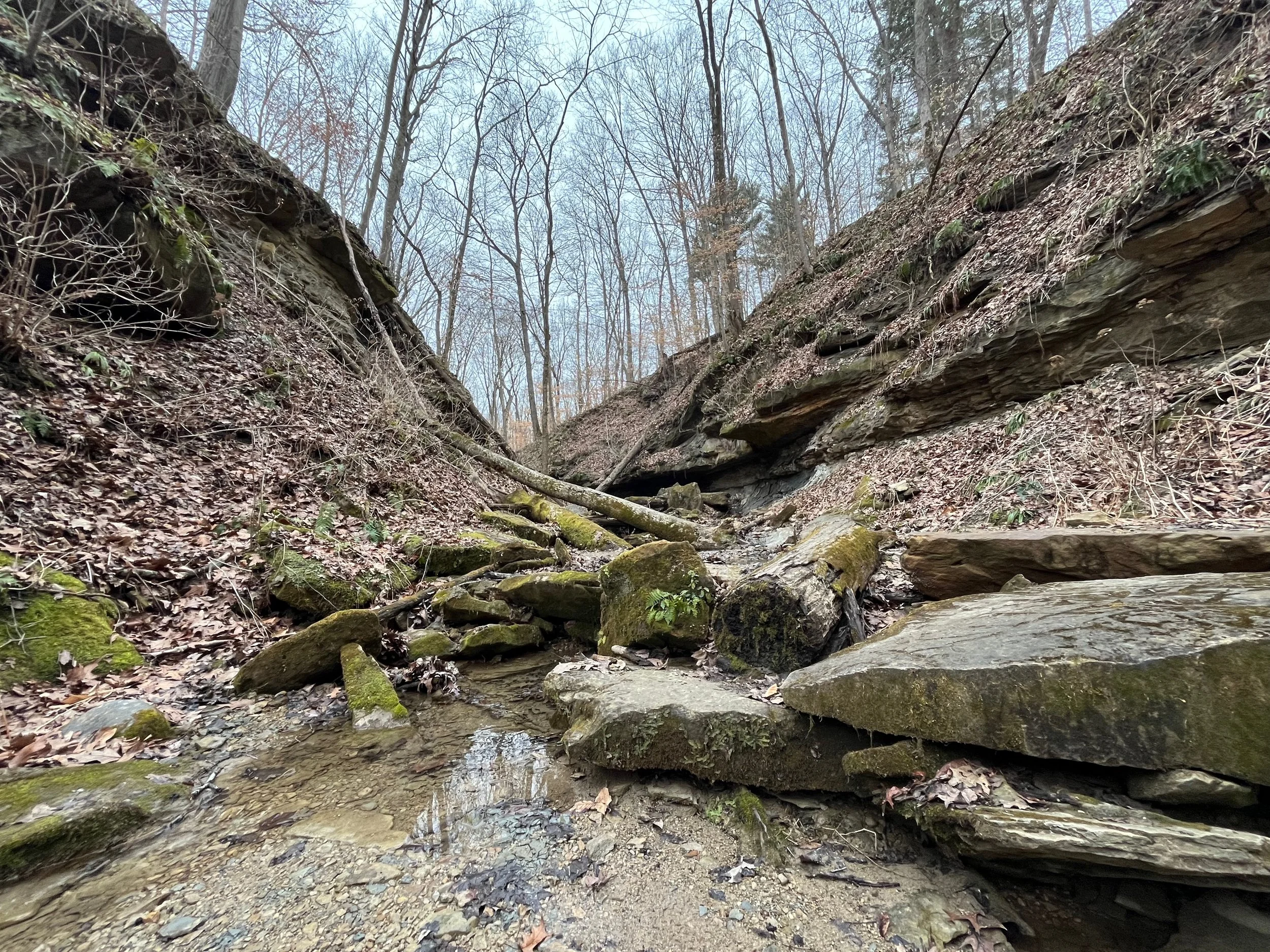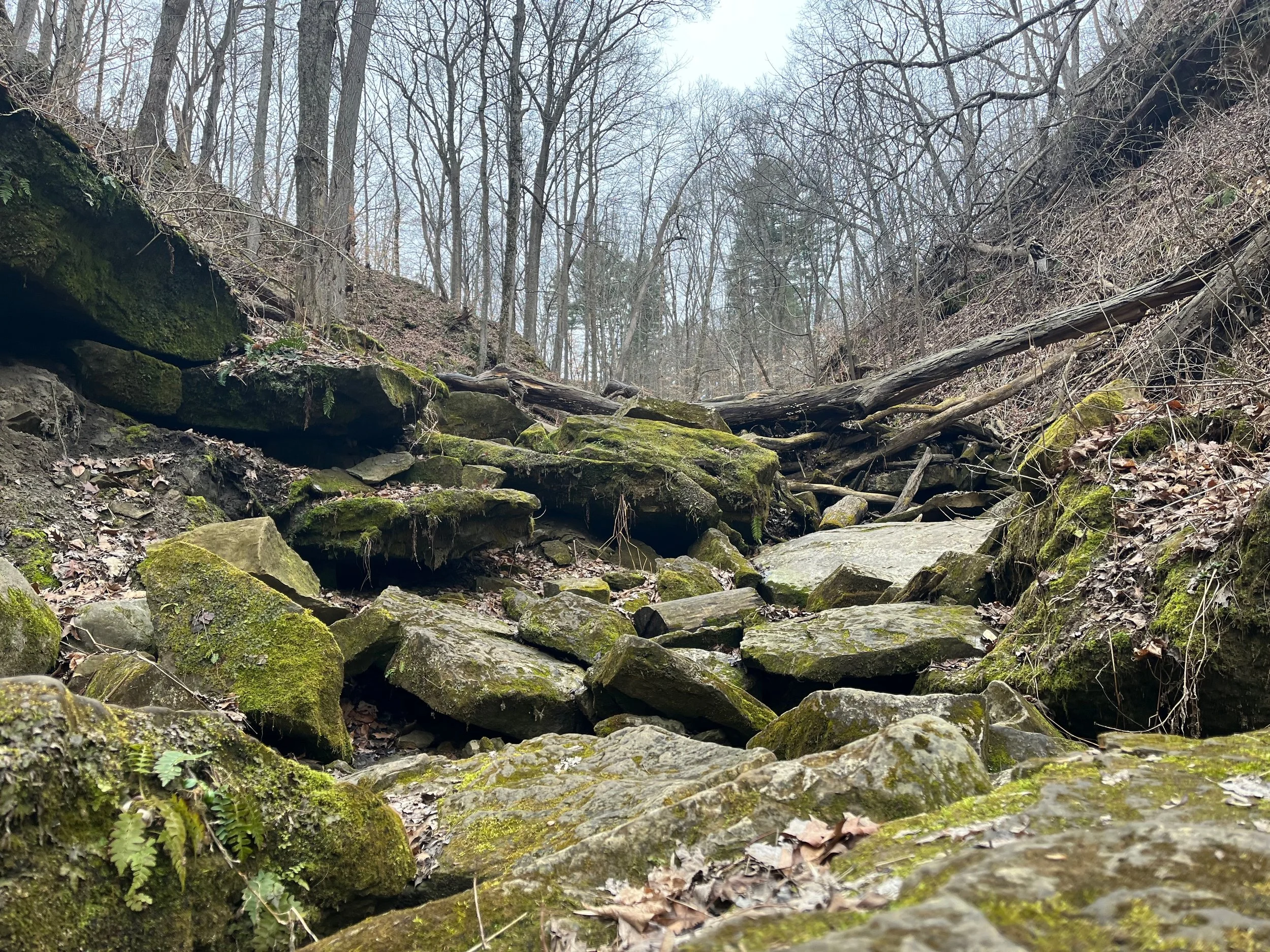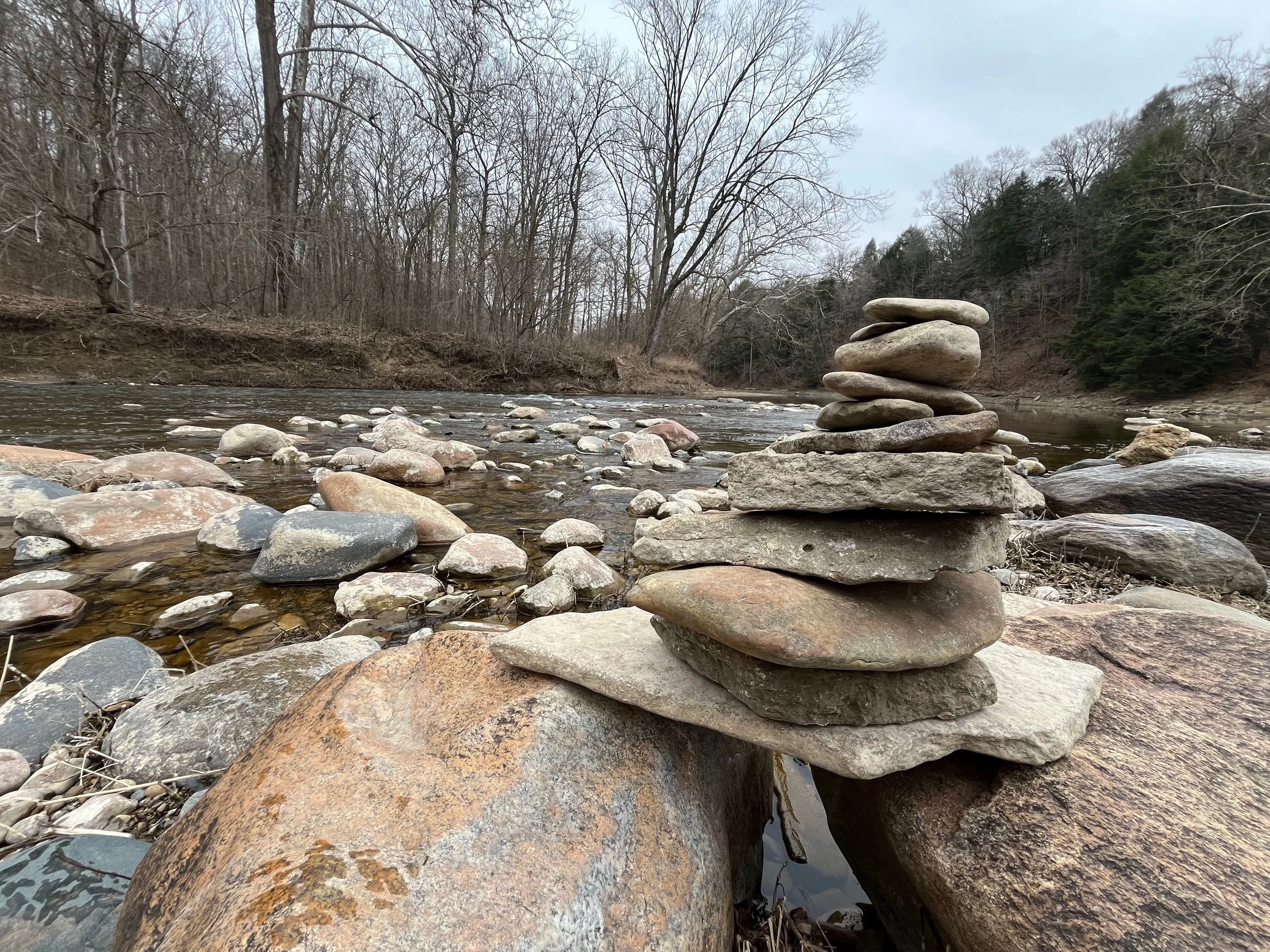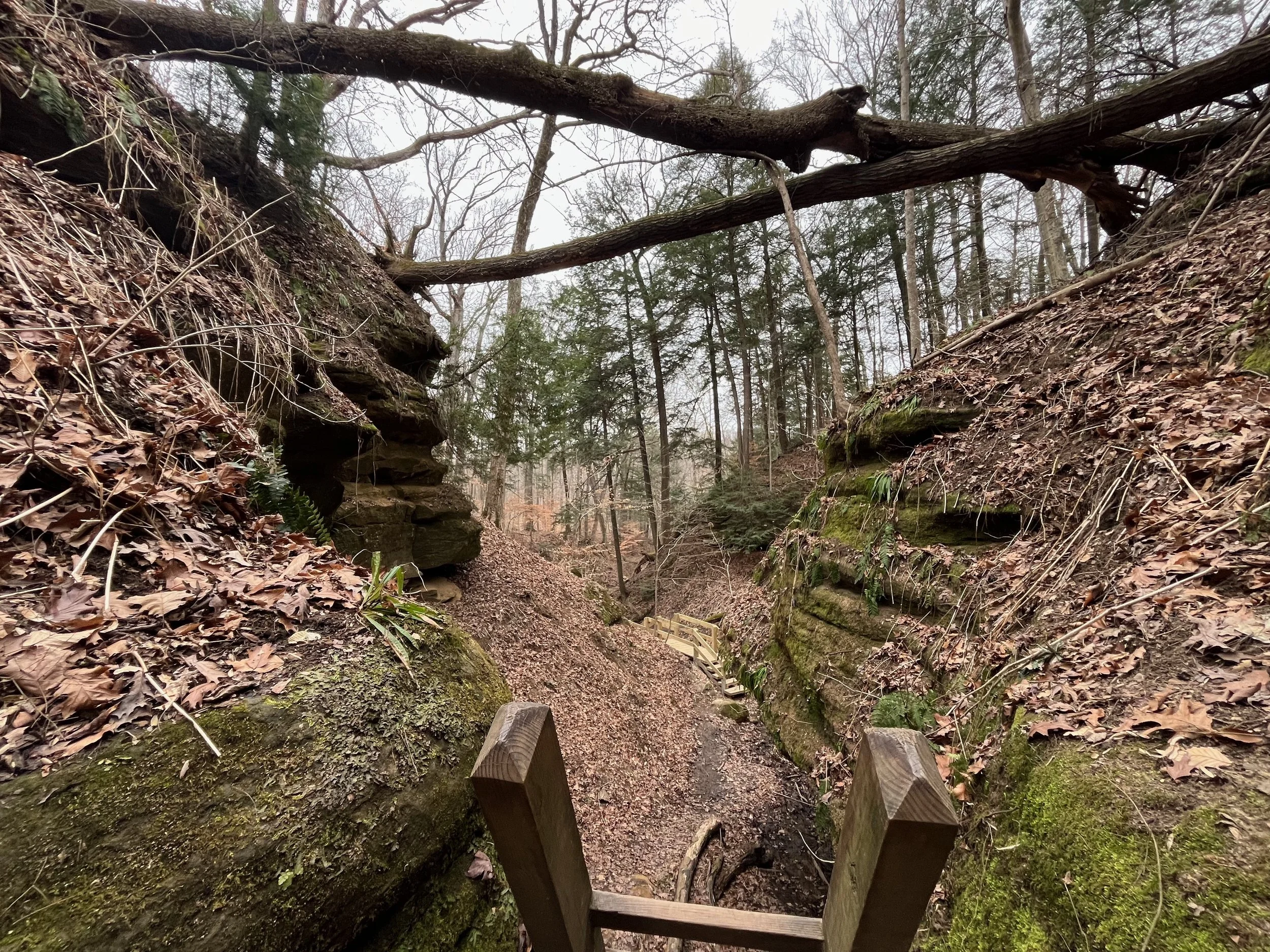
The person who had been named the “Father of Shades,” Joseph W. Frisz, purchased stock in the Dells Mineral Springs Association in 1909 and gained complete control in 1916 of this Association. Frisz safeguarded the natural areas and dense forests, while purchasing additional tracts of land, until the late 1930s. Shades scenic park comprised 2,200 acres. The park boasted the scenic inn set in a grove of mature oak trees, hiking trails, swimming, fishing and natural spring water. In early 1947, the park was purchased from Frisz’s heirs by a holding company until a public subscription campaign (“Save the Shades”) raised the purchase money. Shades became the 15th state park and was hence saved from the timber cutters, who would have used the majority of the oak timber for whiskey barrels.
Shades Indiana State Park
Waveland, Indiana
Long before the first settlers came to the area of Shades State Park, Native Americans lived among the virgin forest, steep ravines and cliff areas along Sugar Creek.
The first European settlers came to this area around the late 1820s after the Miami tribe ceded the land to the federal government in 1818. The shallow soils and broken topography of the lands that border Sugar Creek provided little enticement to farmers, thus the majority of the forest escaped destruction.
One story of the area attributes the illusion of deep shadows beneath the nearly unbroken canopy of these forests and the eerie feeling projected by the “black forest” as the reason for the early name, “The Shades of Death.” Other people, however, say the name resulted due to the Native Americans who occupied this natural stronghold along Sugar Creek and the legend of an early settler being killed. Another story that contributed to the gloomy name claimed that a young settler’s wife buried an axe in her wicked husband’s head. Finally the “Shades of Death” name, considered unsavory, was dropped to simply “The Shades.” These examples of the legends and folklore of the area are often topics at campfires.

